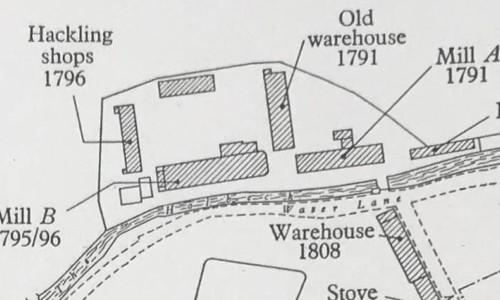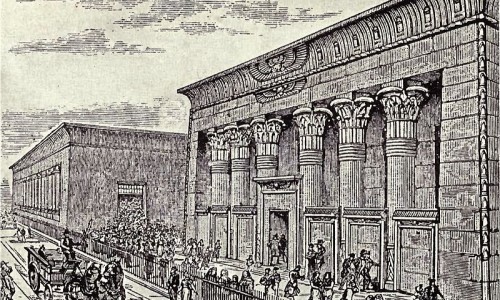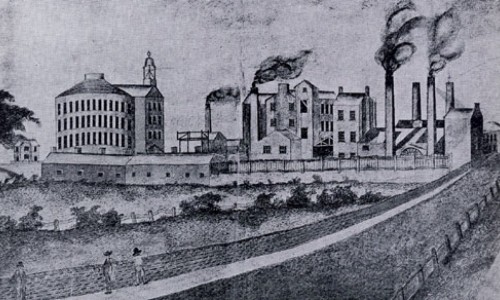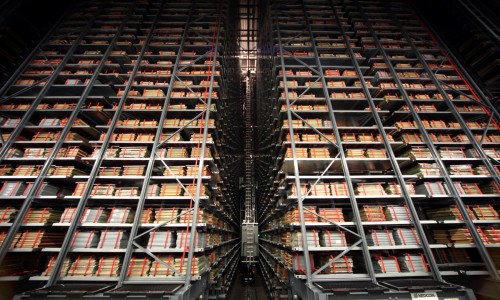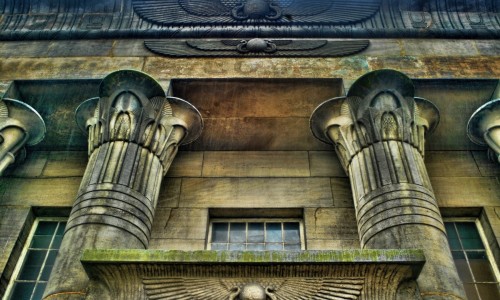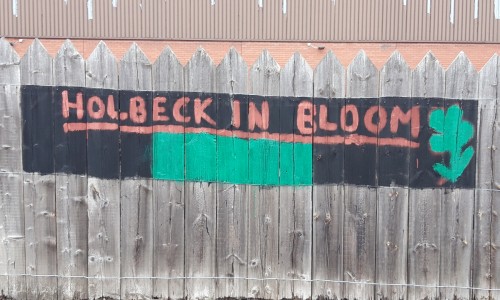A Temple Of Sustainability Again: How CEG are helping work towards a carbon neutral Leeds
November 22, 2019
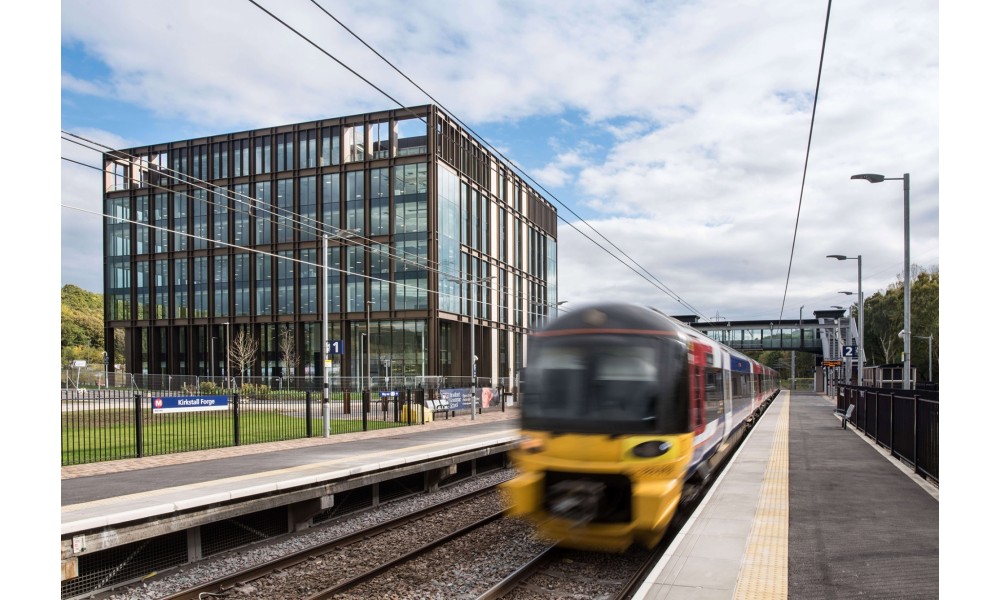
The Science is a problem; climate change is “An Inconvenient Truth”. And in a world that is slowly becoming a scientific problem beyond any recognisable scale, we need to be careful how we respond to it. We can’t just solve one problem by adding to a much bigger one. By building much needed homes and workplaces, we are using precious resources, but also, if delivered in an unconsidered way, we are potentially compounding the issue and locking in problems for years to come. But there are ways to control that, and developers like CEG are committed to finding these solutions, implementing them and helping others do the same.
As individuals we have a relatively small environmental impact on the world, and as an individual organisation, CEG has a relatively small environmental impact on the world. But what we do and how we act, is how we can help to save it, and we can never think we are too small or insignificant to matter. Equally, organisations like CEG should never think they are perfect and that they are doing enough, individually and collectively, we can always do more.
The reality of how developers exist in 2019 is very different to the traditional image of ruthless fat cats, exploiting people and square inches to improve their bottom line. The UK Green Building Council (UKGBC), established in 2007, has long been focussed on breaking down the barriers to enable the delivery of a greener built environment, and has a mission “to radically improve the sustainability of the built environment, by transforming the way it is planned, designed, constructed, maintained and operated.” In the case of developing land and creating public infrastructure, this can be achieved through various means:
- Mitigating and adapting to climate change
- Eliminating waste and maximising resource efficiency
- Embracing and restoring nature and promoting biodiversity
- Optimising the health and wellbeing of people
- Creating long-term value for society and improving quality of life
CEG are working directly with members of the UKGBC, whose number includes the lead contractors recently appointed to the Globe Point and Globe Square schemes. By developing this partnership approach to working, CEG as a developer are reaching far beyond the boundaries of policy and compliance to test new and innovative ways of constructing and measuring performance. The aim being to deliver buildings that perform on day one, and into perpetuity. CEG are able to follow this vision in how they deliver projects all over the UK, and particularly in Leeds.

(An aerial view of Kirkstall Forge, the Brownfield site being developed in stages by CEG. Here you can see the train station, Number One office building and the Forging Futures Campus)
Leeds City Council issued a Climate Change Annual Report in April 2019 which highlighted the current issues facing the city. Not surprisingly, they mirrored the global consequences that are currently facing everyone: the increase in global temperatures damaging diverse ecosystems, melting icecaps and glaciers, ocean warming, sea levels rising and species extinction. Severe weather events are also becoming more commonplace, and we have seen this in Leeds with the Boxing Day 2015 floods. Other direct impacts of climate change in Leeds include city-wide energy poverty, the development of Veolia’s Recycling & Energy Recovery Centre at Cross Green which opened in 2017 with the aim of removing the use of landfill sites, and the start of the district heating system (Leeds PIPES).
These are just a few examples, but the stark reality is we can see and experience these global impacts here on the ground in Leeds, and whilst we like to think Leeds is pretty special, alas, nothing and no one can escape this.
So what can Leeds do?
A landmark United Nations Report in 2017 is unambiguous in its conclusion; limit global warming to within 1.5°C to avoid irreversible damage. The timeframe for this? The next 12 years. Leeds City Council followed this in March 2019 by declaring a ‘Climate Emergency’, underpinned with a commitment for Leeds to become carbon neutral by 2030. This prompted the April 2019 report referenced above, and the city is now working at pace to identify just how this challenging target can be met, not least in a landscape of turbulent national politics and uncertain policy futures.
The Leeds Climate Commission was established in 2017 as an independent body bringing together public, private and third sector organisations to help Leeds as a city to make a positive choice on issues relating to energy, carbon, weather and climate. The format is now being replicated across the UK with Belfast and Edinburgh already launching their own commissions, and Surrey CC, Lincoln CC, Cambridgeshire, Kirklees and Harrogate all setting up similar commission structures using the Leeds model.
With a strong emphasis on collaboration, the Leeds Climate Commission is providing authoritative advice on steps towards a low carbon, climate-resilient future. This has the aim of informing policies and shaping the actions of local stakeholders and decision makers. The commission will monitor progress towards meeting the city’s carbon reduction targets and recommend actions to keep the city on track. A key mechanism in achieving this was seen in the 2019 launch of a science-based carbon reduction roadmap for the city of Leeds, identifying actions by sector that can collectively deliver interim targets measurable in five yearly intervals, to meet the overall 2030 target.
The scale of the problem is not to be underestimated; Leeds has calculated its per capita share of global greenhouse gas emissions is 42 megatonnes, and this is essentially the city’s Carbon Budget up to 2050. Unfortunately, at current rates and with business as usual, Leeds would use its entire “budget” for the next 31 years in just nine years’ time. Time is ticking. True, Leeds’s emissions have fallen by 43% in the last 14 years, however this is largely a result of decarbonisation of the electricity in the national grid, rather than through direct actions within the city. So Leeds now needs action across all sectors; transport, housing, commercial properties, industry and agriculture.
Apart from the obvious health and environmental impacts that a net zero carbon economy offers, there is also an improvement in quality of life. And this is a key method through which developers such as CEG can promote best practice. The Leeds Climate Commission predicts that Leeds could save up to £277million a year if it exploited all carbon reduction opportunities, and that is a sum that can change a lot of lives, as well as helping to change the world. Alas, the council can’t act alone on this and it needs the support of the public, investors and businesses. That is why it set up the “Big Leeds Climate Conversation” as a means of triggering crucial discussion on the many related matters that the city can collectively influence.

CEG are actively engaged in discussions with both Leeds City Council and the Leeds Climate Commission in terms of the city-wide problems, as well as addressing the way in which they are managed on their two Leeds sites: Kirkstall Forge and the new Temple development in central Leeds. The Leeds Climate Commission is bringing key organisations together – including CEG – and acting to extend the collaborative approach by providing a forum to exchange ideas and information.
But perhaps the most important message is that, ultimately, individual organisations must take the responsibility for their own actions and policies.
What is Leeds City Council doing?
For their own part, and on a city-wide scale, Leeds City Council is showing leadership in implementing a number of carbon-cutting schemes such as:
- Leeds PIPES – a district heating network for council properties delivering low carbon heat.
- LED lighting in schools.
- Merrion House refurbishment achieved BREEAM ‘excellent’ status, achieved through thermal insulation, air tightness, solar energy consumption, LED lighting and low water usage fittings in sanitary installations.
- LED bulbs in all 92,000 street lamps and phasing-up part-night operation over the next four years.
- Increase conversion of fleet vehicles from diesel to electric, improving what is already the country’s largest local authority fleet of electric vehicles.
- Various domestic energy efficiency initiatives.
- Leeds City Council has also set up a Climate Emergency Advisory Board and the Clean Air Leeds initiative.

(The first prototype housing nearing completion at Kirkstall Forge)
What are CEG doing?
In managing the design and construction of their Leeds headquarters at Kirkstall Forge – the ‘Number One’ office building – CEG have implemented a low carbon framework of measures, recognising that infrastructure is the key starting point. Getting infrastructure right allows you to then focus on how people use the development and making sure the development also works for those same people.
So in developing the Kirkstall Forge site, CEG have:
- Delivered a £15.9million train station (in conjunction with LCC, WYCA, Leeds City Region LEP and the rail industry) to enable sustainable travel for residents, occupiers and visitors.
- Been awarded Gold Status as a bike-friendly business – providing a cycle hire scheme, parking, showers and drying facilities.
- Secured £13,500 Leeds City Council funding to trial electric bikes for e-sustainable travel.
- Promoted the reduction of single-occupancy car journeys, with a 100% increase in commuting by train to the site since the increase in frequency introduced in February 2019.
- Delivered the first office building – ‘Number One’ – awarded BREEAM ‘excellent’ and EPC ‘A’ status, winner at the Property Wellbeing Awards and declared the ‘healthiest office in the UK’, amongst many other design awards.
- Development of Kirkstall Forge, which has involved the acquisition, investment, site clearance and de-contamination of a brownfield site of 57 acres in size.
- Innovative prototype housing – currently nearing completion – is using SIP (structurally insulated panels) to reduce embodied carbon in construction. This provides improved air tightness and reduces energy usage.
- Improved footpaths and cycle paths and accessibility also promotes use of the adjacent canal for pedestrians and cyclists.
And yet, perhaps one of the most distinguishing factors about CEG, is that they are a long term developer with long term investors, with a long term commitment to the future of their buildings and developments. They don’t deliver and walk away, in fact they are rooted to Leeds in establishing a headquarters at Kirkstall Forge and have undertaken a detailed post-occupancy evaluation of Number One to gauge occupier satisfaction (100% rated it ‘good’ or ‘very good’ when asked about their overall impression of the workplace), but crucially to also understand how the building is performing now it is almost fully occupied. This has led to further efficiency measures being implemented, and has been an invaluable tool to inform the design of the first buildings at Temple.

(Solar panelling on the roof of the Number One office building)
What are CEG doing at Temple?
The infrastructure improvements to be introduced at the Temple development are as much about improving the environment for local people as they are in building design and performance. There are plans to improve connectivity as a means of regenerating the area and re-connecting isolated and disenfranchised communities. In a physical sense this has the effect of creating more and improved pedestrian routes, and as well as creating a natural and safer public environment this works to minimise car use. This is part of a series of measures integral to the Temple scheme:
- Downgrading highway infrastructure to ameliorate the high speed ‘rat runs’ that exist through Holbeck.
- Wellbeing appraisal: a sustainability statement accompanied the planning application which ensures the design of the scheme incorporates the principle of “healthy homes and healthy neighbourhoods”. This works towards the commitments to energy efficiency, water conservation, construction waste minimisation, operational recycling, biodiversity and best practice site management techniques.
- Transport modelling: Developing test scenarios to reduce through-traffic and promote environmental improvements.
- Assist in developing Leeds PIPES initiative.
- Improve connectivity with River Aire and Canal-side waterfront via pedestrian crossings over the Hol Beck.
- Invested £300,000 towards the recent Flood Alleviation Scheme on the Hol Beck to increase permeability for pedestrians.
- Capacity for electric vehicle charging in the Temple area.
- Omitting all gas from its next development, Globe Point, to make it all-electric, with future developments under review.
CEG are going above and beyond the policy requirements, also drawing on the success of an office design model pioneered in Australia, where 86% of the office market is now engaged in a scheme called ‘Design For Performance’ (DFP). This will be undertaken for the first buildings at Temple – Globe Point and Globe Square – which begin construction in early 2020.
DFP is an industry initiative to tackle the ‘performance gap’, this being a way of measuring how an office development delivers in practice against its design intent, in terms of energy efficiency; a well-documented but as yet unsolved issue in UK construction. It uses energy modelling to estimate actual usage and then crucially, verifies this year on year, continuously monitoring and improving the performance of the building to ensure it is running at its optimum and most carbon efficient. This includes the performance of systems for heating, ventilation, cooling and lighting, and this thermal modelling goes well beyond the assessment required for regular building compliance. As well as eventual environmental improvements and capital and operational cost savings brought about by reduced energy usage, the DFP model provides assurances that design intent will be delivered, and provides more transparent performance and carbon data for investors, developers, occupiers and the city.
So where does this leave us?
Right now, the Big Leeds Climate Conversation is the critical piece of the puzzle, and everyone has a part to play in this. While developers like CEG and many other organisations can continue to contribute to the city’s target to be carbon neutral by 2030, all people in Leeds can get involved in this online survey, which has a closing date of 30th November 2019. Set up in collaboration with the Leeds Climate Commission, the Big Leeds Climate Conversation is vital in gauging how residents of Leeds feel about the scale and shape of the ideas proposed within the roadmap.
Achieving the ambitious 2030 target will require huge changes to the way we live and work. The support of local authorities and businesses is one thing, but the support of residents is also critical. Completing the online survey is the first step in an unprecedented opportunity to improve our quality of life and shape Leeds into a city that is healthier and more sustainable, and ultimately better for everyone.

(Temple Works - the centrepiece of the new Temple district)
And where does that leave CEG?
The results of the Big Leeds Climate Conversation will be digested and Leeds City Council’s plan will be prepared for release in December, but CEG are already ahead of the game, and will continue with the Kirkstall Forge housing project that has already begun, and will commence their Temple regeneration in early 2020. This will be another 21st century development utilising all current knowledge and technologies to minimise the environmental impact and promote best practice for the future.
Ultimately this will also include the refurbishment of the dramatic Temple Works building; seeking to reinstate design innovation to a landmark building that in 1840 was an un-witting pioneer in sustainable building design. Industrial Leeds saw a building constructed that had a green roof for humidity control, the world’s first hydraulic lift, an open-plan single-storey layout to improve working efficiencies with incredible uniformity of natural light, and a system for the collection and re-use of rainwater in its design of roof column uprights.
It seems that CEG are definitely being careful what they add to the world and how they add it, and with Temple Works it is appropriate that CEG are bringing these innovative practices back in line with modern times, because time is running out.

.jpg&w=500&h=300)
